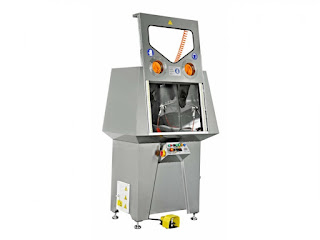ultrasonic cleaning machines and traditional rotary washing methods
"When it comes to industrial cleaning, understanding the differences between ultrasonic cleaning machines and traditional rotary washing methods is crucial. Here's a breakdown of their variances and the advantages they offer:
Ultrasonic Cleaning Machines:
Precision Cleaning: Utilizes high-frequency sound waves to create microscopic bubbles that penetrate and remove dirt, grease, and contaminants from intricate parts.
Gentle on Parts: Ideal for delicate or complex components that require thorough yet gentle cleaning without the risk of damage.
Efficiency: Provides faster and more thorough cleaning compared to traditional methods, reducing labor costs and increasing productivity.
Versatility: Suitable for a wide range of materials and geometries, making it adaptable to various industries and applications.
Environmentally Friendly: Uses water-based solutions with minimal or no harsh chemicals, reducing environmental impact and promoting sustainability.
Rotary Washing:
Mechanical Action: Relies on rotating brushes, sprayers, or agitation to dislodge contaminants and debris from parts' surfaces.
Heavy-Duty Cleaning: Well-suited for large, robust parts or components with stubborn or heavy soiling that may require more aggressive cleaning methods.
Cost-Effective: Generally more affordable to purchase and maintain compared to ultrasonic cleaning machines, making them a budget-friendly option for certain applications.
High Throughput: Can handle larger volumes of parts at once, making it suitable for mass production or batch processing environments.
Limited to External Cleaning: Primarily effective for cleaning external surfaces of parts, may not reach internal or intricate areas as effectively as ultrasonic cleaning.
Choosing the Right Solution:
For Delicate Parts: Opt for ultrasonic cleaning for delicate or intricate parts that require gentle yet thorough cleaning without risking damage.
For Heavy Soiling: Rotary washing may be preferable for parts with heavy soiling or robust components that can withstand more aggressive cleaning methods.
For Efficiency: Ultrasonic cleaning offers faster, more precise cleaning, making it ideal for industries where precision and efficiency are paramount.
For Cost-Effectiveness: Rotary washing may be a more cost-effective solution for applications with lower budgets or high-volume cleaning requirements.
What do you need to clean with Industrial Ultrasonic Cleaning Machine (youtube.com)
Both ultrasonic cleaning machines and rotary washing methods have their advantages and are suitable for different cleaning scenarios. Understanding the differences between them allows businesses to choose the right solution based on their specific cleaning needs, budget constraints, and desired outcomes."


Comments
Post a Comment